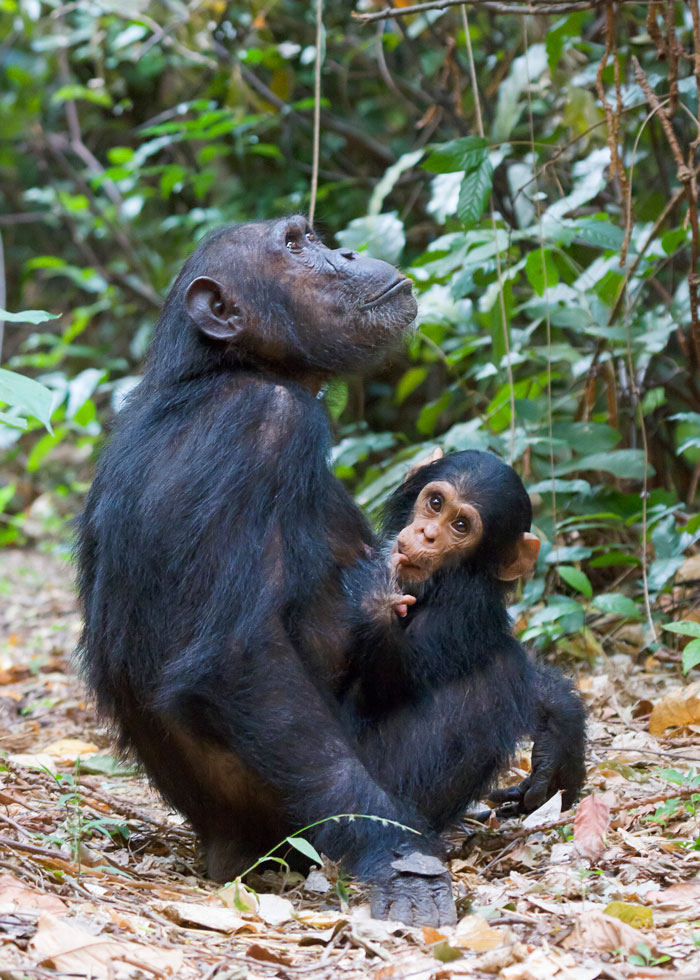Scientific Name
Pan troglodytes
Also Called: Chimp
Description
The chimpanzee is grouped with the apes, such as the gorilla. However, it looks a lot like a tailless monkey. Its hair is black or brown and covers the entire body except for the face. Chimpanzees have flat faces and large external ears. They also have very long arms (50 percent longer than their body length.) Chimpanzees have an opposable thumb and are often seen using „tools”. These tools are usually used for food procurement. A twig, stripped of leaves, is thrust into a termite nest and comes out covered with insects that are then eaten. Chimpanzees avoid large bodies of water and are usually only able to swim if extremely excited. Chimpanzees are diurnal and build nests to sleep in at night. They spend time both in trees and on the ground. In a tree, movement is usually done by swinging from branch to branch. On the ground, while they can walk erect, movement is usually done by knuckle walking (using one arm to form a tripod with the legs).
Food
Chimpanzees primarily eat fruits, seeds, and leaves, bark, insects, and honey. However, chimpanzees are omnivorous and will occasionally hunt, kill, and eat meat (young monkeys, bush pigs, etc.)
Habitat
Chimpanzees can be found in Western and Central equatorial Africa north of the Zaire river; ranging from Senegal to Tanzania. They live in tropical forests or open grasslands that have access to evergreen, fruit bearing trees.
Predators
The primary predators of the chimpanzee are man, leopards, baboons, and large snakes.
Social Structure
Chimpanzees are very social animals and live in groups of 15 – 80 animals. Unlike other animals that live in communities, chimpanzee groups don’t have a definite leader. Their communities are made up of several subgroups. Among the males there is a loose hierarchy but no overall leader. Within the community, these groups are quite fluid, with adults wandering off and joining other groups. Mother chimps will often form attachments with offspring and stay with them as a group. Between communities, there is a lot of hostility. Chimpanzees spend a lot of time grooming each other. This strengthens their social bond. Chimpanzees communicate vocally, with facial expressions, and with gestures.

Birth & Offspring
Females give birth to a single young chimp after about 8 months. Young chimpanzees are born helpless and spend the first 6 months clinging to the hair on its mother’s chest while she is in motion. From 6 months to 2 years, young chimpanzees ride on the mother’s back. They are weaned at 5 years. Young chimpanzees will often stay with their mothers for many years, thus forming a subgroup within the community.
Senses
Chimpanzees are very intelligent. They are able to solve complex puzzles and have even been taught sign language. However, it is unclear whether the chimpanzee understands words as abstract thought or if it is just repeating.

Lydia King is a huge animal lover and has always been fascinated with learning about the animal kingdom. She enjoys writing about anything animal related from scientific information about rare species to animal references in pop culture.












